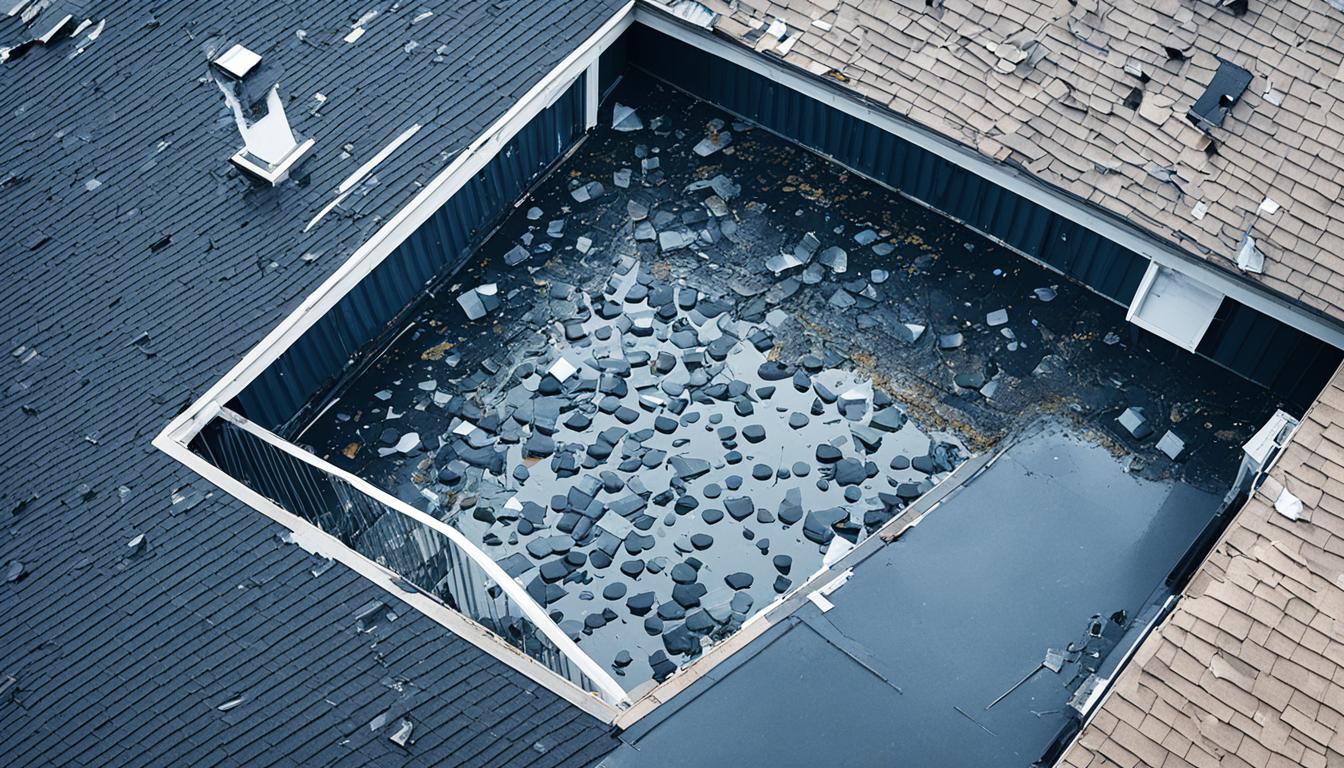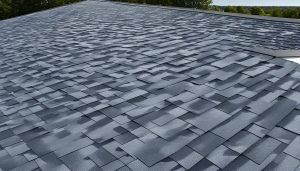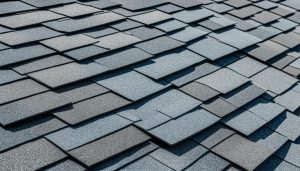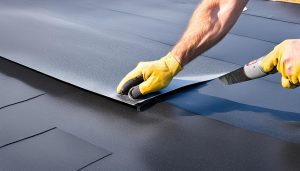Welcome to our comprehensive guide on commercial roofing! Whether you own or manage a commercial building, it’s crucial to understand the critical issues that demand immediate attention when it comes to your rooftop. By addressing these key areas promptly, you can ensure the long-lasting protection and maintenance of your commercial roofing system.
In this first section, we will explore the top 5 critical issues that require immediate attention in commercial roofing. From regular inspections and maintenance to identifying and repairing roof leaks and water intrusion, we will cover all the essential aspects you need to know.
For visual appeal and relevance, take a look at the insightful image below:
So, let’s dive in and equip you with the knowledge to address these critical issues and safeguard your commercial roof. Read on to learn more!
Understanding the Importance of Regular Inspections and Maintenance
Regular inspections and maintenance are vital for the health and durability of commercial roofing systems. By conducting regular inspections and addressing potential issues promptly, you can prevent small problems from escalating into costly repairs. Additionally, implementing a comprehensive maintenance plan will help extend the lifespan of your commercial roof and ensure it continues to provide reliable protection for your business.
One of the key benefits of regular inspections is the early detection of any signs of damage or deterioration. These inspections allow roofing professionals to identify issues such as leaks, cracks, or damaged flashing before they cause significant problems. By addressing these issues promptly, you can prevent water infiltration, structural damage, and potential disruptions to your business operations.
“Regular inspections and maintenance are like preventative medicine for your commercial roof. They help catch small problems before they become big headaches.”
In addition to identifying and addressing specific issues, regular inspections also provide an opportunity to assess the overall condition of your commercial roof. Roofing professionals can evaluate the stability of the roofing materials, check for signs of wear and tear, and identify any areas that may require additional attention.
Maintenance is equally important in preserving the integrity of your commercial roof. By implementing a comprehensive maintenance plan, you can proactively address potential risks and ensure that your roof remains in optimal condition. This includes tasks such as cleaning gutters, removing debris, and maintaining proper drainage systems. Regular maintenance promotes the longevity of roofing materials and prevents the accumulation of moisture that could lead to leaks or other damage.
Investing in regular inspections and maintenance can save you significant costs in the long run. By identifying and addressing issues early on, you can prevent major roof repairs or even the need for a complete roof replacement. Additionally, a well-maintained roof will have a longer lifespan, reducing the frequency of repairs or replacements over the years.
Remember, your commercial roof is an essential asset that protects your business and investments. Regular inspections and maintenance are crucial to ensure its ongoing performance and longevity.
| Benefits of Regular Inspections and Maintenance |
|---|
| Early detection of issues |
| Prevention of water infiltration and structural damage |
| Assessment of overall roof condition |
| Promotion of roofing material longevity |
| Cost savings by preventing major repairs or replacements |
Identifying and Repairing Roof Leaks and Water Intrusion
Roof leaks and water intrusion can cause significant damage to your commercial building if left unattended. It’s crucial to promptly identify and address these issues to protect your building’s interior and structural integrity. In this section, we will explore the common causes of roof leaks and water intrusion, and discuss effective repair strategies.
Common Causes of Roof Leaks
Roof leaks can occur due to various factors, including:
- 1. Damaged Flashing: Cracked or damaged flashing, which are the metal strips that seal the joints and edges of the roof, can allow water to seep in.
- 2. Punctures: Punctures from falling debris or foot traffic can create openings for water infiltration.
- 3. Membrane Deterioration: Over time, the roofing membrane may deteriorate, leading to leaks.
By understanding these causes, you can better identify potential areas of vulnerability and take proactive measures to mitigate the risk of leaks and water intrusion.
Importance of Prompt Leak Detection
Identifying roof leaks as early as possible is crucial to prevent further damage and costly repairs. Even a small leak can gradually worsen and compromise the structural stability of your building. Regular inspections can help in detecting leaks in their early stages, allowing for timely intervention.
Remember, the sooner you catch a leak, the better chance you have of minimizing potential damage and preserving your commercial roofing system’s lifespan.
Effective Repair Strategies
Repairing roof leaks requires precise techniques and quality materials to ensure a long-lasting solution. Depending on the extent of the damage, professional roofing contractors may employ various repair strategies, such as:
- 1. Patching: Applying specialized patches or sealants to seal small leaks and prevent further water intrusion.
- 2. Flashing Replacement: Replacing damaged flashing to create a watertight seal around roof joints and edges.
- 3. Membrane Repair: Repairing or replacing the damaged membrane to restore the integrity of the roofing system.
Professional expertise is crucial when it comes to repairing roof leaks to ensure a thorough and effective solution. Consulting a reputable roofing contractor will help you address the issue promptly and avoid potential complications.
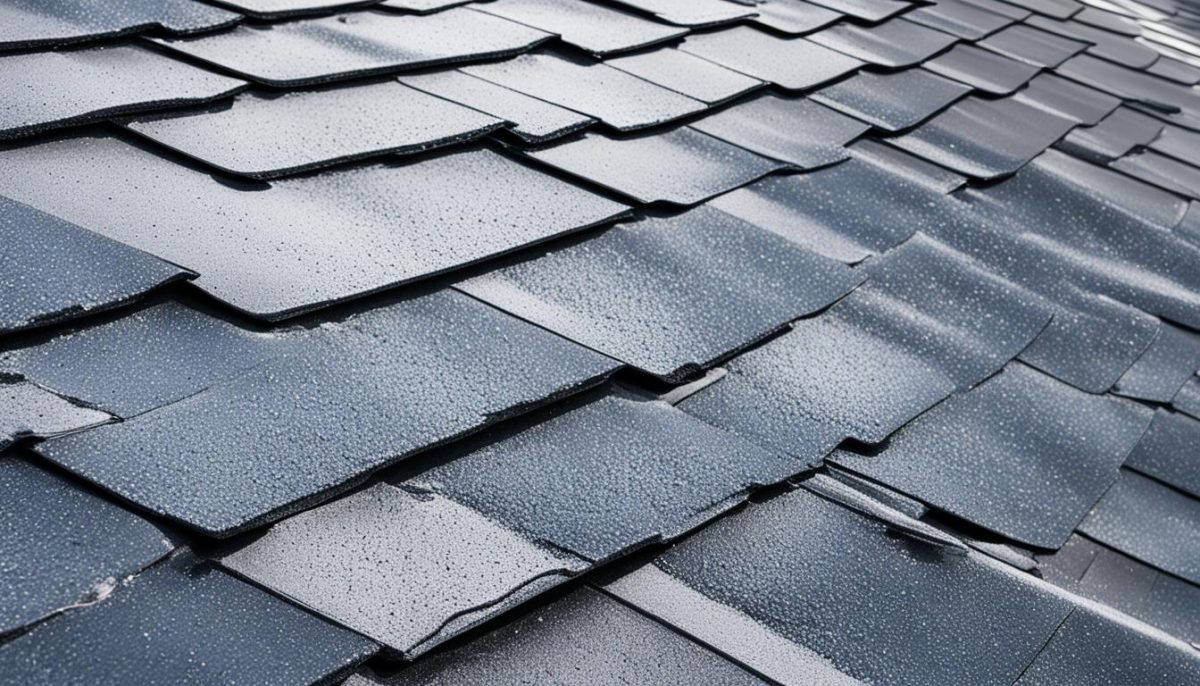
| Benefits of Prompt Leak Repair | Consequences of Ignored Leaks |
|---|---|
| 1. Prevents further water damage to the building interior. | 1. Structural damage to the building’s framework. |
| 2. Preserves the lifespan of the roofing system. | 2. Mold and mildew growth, resulting in potential health hazards. |
| 3. Avoids costly repairs or premature roof replacement. | 3. Damage to electrical systems and equipment. |
Managing Roofing Material Degradation and Replacement
As time passes, commercial roofing materials are bound to experience degradation due to various factors such as exposure to the elements and UV radiation. It’s crucial to be aware of the signs that indicate roofing material degradation to prevent further damage to your commercial property. In this section, we will explore the common signs of degradation and discuss the importance of timely roof replacement.
When it comes to roofing material degradation, it’s important to be proactive and address the issue promptly. Ignoring signs of degradation can lead to more extensive damage, causing higher repair costs and potential hazards for your building’s occupants. Some common signs to look out for include:
- Cracked or curling shingles
- Exposed or missing granules
- Discoloration or fading
- Sagging or uneven roof surface
- Evidence of water leaks or moisture intrusion
If you notice any of these signs, it’s essential to consult with a professional roofing contractor to assess the extent of the degradation and determine whether roof replacement is necessary. Delaying replacement can lead to further deterioration of the roofing system, compromising the structural integrity of your commercial building.
When considering roof replacement, it’s important to explore different roofing material options available in the market. Each roofing material has its own pros and cons, and the choice should align with your specific needs and preferences. Here are some commonly used roofing materials:
| Roofing Material | Pros | Cons |
|---|---|---|
| Asphalt shingles | Affordable, wide range of styles and colors | Shorter lifespan compared to other materials, susceptible to damage from extreme weather conditions |
| Metal roofing | Durable, long lifespan, energy-efficient | Higher upfront cost, requires professional installation |
| EPDM rubber | Excellent resistance to UV radiation and weathering, easy and cost-effective installation | May require regular maintenance, can be punctured by sharp objects |
Choosing the right roofing material is crucial as it directly affects the durability, energy efficiency, and overall aesthetics of your commercial building. It’s advisable to consult with roofing professionals who can provide guidance based on your specific requirements.
Preventing Ponding Water and Drainage Issues
Ponding water and drainage issues pose significant threats to the structural integrity of your commercial roof. If left unaddressed, ponding water can lead to increased weight load, compromising the stability of your roof. Additionally, it creates a potential entry point for water infiltration, resulting in leaks and water damage within your building.
In order to prevent ponding water and mitigate drainage issues, it is essential to ensure proper roof slope and implement effective drainage systems. Adequate roof slope allows water to flow off the roof quickly, minimizing the chances of water accumulation. Effective drainage systems, such as gutters and downspouts, further facilitate the efficient removal of water from the roof surface.
Importance of Proper Roof Slope
The slope of your commercial roof plays a crucial role in preventing ponding water. A roof with insufficient slope traps water, leading to puddles or ponding. Over time, these standing water areas can cause deterioration of roofing materials and compromise the overall structural integrity.
By designing or adjusting the slope of your roof, you can promote proper drainage and prevent ponding water. Roof slope, also known as roof pitch, is the measure of the vertical rise of the roof per horizontal foot. The ideal slope depends on various factors, including the roofing material, climate, and building design. Consulting with a professional roofing contractor can help determine the optimal slope for your specific commercial roof.
Implementing Effective Drainage Systems
Alongside roof slope, an effective drainage system is crucial for preventing ponding water and ensuring proper water runoff. Gutters and downspouts play a key role in channeling water away from the roof, protecting both the roof itself and the building’s foundation.
When installing or maintaining your commercial roof’s drainage system, consider the following:
- Regularly clean and maintain gutters to prevent clogging and ensure unobstructed water flow.
- Position downspouts strategically to direct water away from the building’s foundation.
- Consider adding extensions to downspouts to further divert water away from the building.
- Inspect and repair any damaged or leaky gutters or downspouts promptly.
By implementing these drainage measures and performing regular maintenance, you can prevent ponding water and safeguard your commercial roof from potential water damage.
| Common Causes of Ponding Water | Potential Solutions |
|---|---|
| Inadequate roof slope | Adjust roof slope or consider installation of tapered insulation systems. |
| Damaged or clogged gutters and downspouts | Regularly clean and maintain gutters, repair or replace damaged components. |
| Structural issues or uneven roof surfaces | Consult with a professional contractor to address underlying structural issues. |
Safeguarding Against Storm Damage and Extreme Weather Conditions
Commercial roofs are highly vulnerable to storm damage and extreme weather conditions. The unpredictable nature of these events makes it crucial for business owners to take proactive measures to protect their commercial roofs from potential harm.
One of the key steps in safeguarding against storm damage is selecting wind-resistant materials for your commercial roof. These materials are designed to withstand high winds, reducing the risk of damage and potential leaks during severe weather. Additionally, proper installation techniques are essential to ensure the stability and durability of your roof, especially in areas prone to extreme weather.
After a storm or extreme weather event, it is essential to conduct routine inspections to assess any potential damage. Promptly addressing any issues identified during these inspections is crucial to prevent further deterioration and costly repairs. By prioritizing these preventive measures, business owners can minimize the risk of storm damage and maintain the longevity of their commercial roofs.

